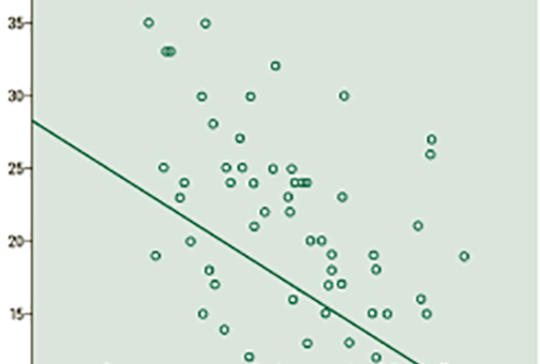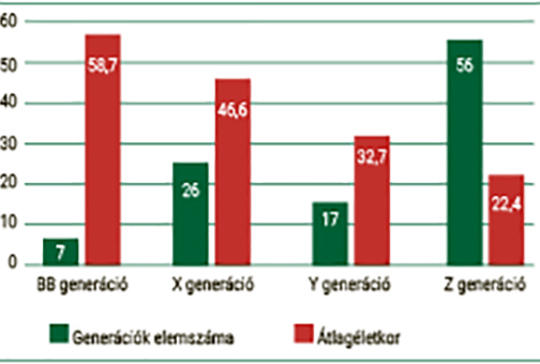The eLitMed.hu medical portal uses computer cookies for convenient operation. Detailed information can be found in the Cookie-policy.
Journal of Nursing Theory and Practice - 2020;33(1)
Content
[Complication of the Metabolic Syndrome in Women with Polycystic Ovary Syndrome]
[In our research we compared whether pregnant women with polycystic ovary syndrome or the mothers who were healthy through pregnancy has a higher risk to develop high BMI, metabolic syndrome, preeclampsia, polyhydramnion and macrosomia. Our research is a retrospective, cross-sectional study. In the random sampling within the target group, the target group was diagnosed with PCOS (n=50) and the control group was mothers who had undergone uninterrupted pregnancy (n=50). The exclusion criterion is the coexistence of other endocrine disease that may affect the parameters under consideration, in addition to the control group the diagnosis of PCOS. With IBM SPSS for Windows 22.0, we applied two-sample T-test and Khi2 test (p<0.05). The BMI values measured in the PCOS study group are higher than in the control group (p<0,05). Pregnant women with PCOS has a higher risk of developing high blood pressure, and high cholesterol (p<0,05). The difference between the two groups can not be considered significant for the development of proteinuria and oedema. Emphasis should be placed on PCOS gravid care, early detection of metabolic disturbances, accurate documentation, and elimination of complications and illnesses associated with the disease.]
[Physical Dimensions of Quality of Life on Dialysis and Renal Transplant Patients]
[End stage renal failure is a disease with a serious impact on the everyday life of patients. The aim of this study is to measure and compare the quality of life of patients on hemodialysis and following renal transplant in Szeged, based primarily on physical dimensions and to compare the results with similar national and international data. Throughout the research the authors used the Kidney Disease Qualitiy of Life Questionnary- Short Form-36, the Illness Intrusiveness Rating Scale, and their own questionnary. They involved 111 patients into their study from September 2018 to May 2019. The results show that among the dimensions regarding physical health the pain subscale in the renal transplant cohort reached the highest scores: 76±26 (average±SD) vs. 55±33 in the dialysis cohort. (p<0,001). The result of physical role functioning subscale was the lowest, reaching 69±25 points vs. 50±30 in the dialysis cohort. (p<0001). Analyzing the correlation of quality of life and illness intrusiveness, they found that the higher the quality of life result, the lower is the illness intrusiveness result (r=-0,478). Due to the results of the present study, it can be stated, that the quality of life in the dialysis cohort is lower in Szeged. These results may contribute to a holistic view of care of our patients. ]
[The Future Nurse –Work Value Preferences of the Generation Z]
[To explore the work value preferences of nurses born after 1995 and those of different generations. The Super Job Value Preference Questionnaire was completed by nurses of different qualifications (N=106). In the analysis, we ranked the average of each value range to determine the rank, and also the standard deviation value. Preferred values for nurses of each generation: hierarchy, physical environment, materiality for Baby Boomers; for X generation: altruism, hierarchy, physical environment; for the Y generation: altruism, hierarchy, security; and for Z generation: hierarchy, altruism, social relationships. We found differences in preferred work values between generations, and also found the similarities and differences among the generations. ]
[The Course and Role of the Military Caregivers during World War II]
[Since the wars of the world, women have continued to play an essential role in the military and the workforce. During the World War II Hungarian women took up jobs in factories, warehouses, offices, and other locations that supported the wartime needs. However the work programs conducted on a voluntary basis did not reach enough workpower. As progressed, the need for more industrial workers became apparent and the government changed its policy regarding women in industry. It was announced in May 1944, that unmarried women between 18 and 30 years of age were called up for compulsory work. Special efforts were made to protect the health of these women. Dr. Mária Baloghy on 1944 introduced a new course based on the factory nursing program, to establish a paid military caregiver serving directly under the control of the Ministry of Defense. The following essay on the course and the support role of the Military Caregivers a series of studies on the history of Nursing.]
1.
Clinical Neuroscience
Is there any difference in mortality rates of atrial fibrillation detected before or after ischemic stroke?2.
Clinical Neuroscience
Factors influencing the level of stigma in Parkinson’s disease in western Turkey3.
Clinical Neuroscience
Neuropathic pain and mood disorders in earthquake survivors with peripheral nerve injuries4.
Journal of Nursing Theory and Practice
[Correlations of Sarcopenia, Frailty, Falls and Social Isolation – A Literature Review in the Light of Swedish Statistics]5.
Clinical Neuroscience
[Comparison of pain intensity measurements among patients with low-back pain]1.
Clinical Neuroscience Proceedings
[A Magyar Stroke Társaság XVIII. Kongresszusa és a Magyar Neuroszonológiai Társaság XV. Konferenciája. Absztraktfüzet]2.
3.
Journal of Nursing Theory and Practice
[A selection of the entries submitted to the literary contest "Honorable mission: the joys and challenges of our profession" ]4.
Journal of Nursing Theory and Practice
[End of Life and Palliative Care of Newborns in the Nursing Context]5.
Journal of Nursing Theory and Practice
[Aspects of Occupational Health Nursing for Incurable Patients ]






